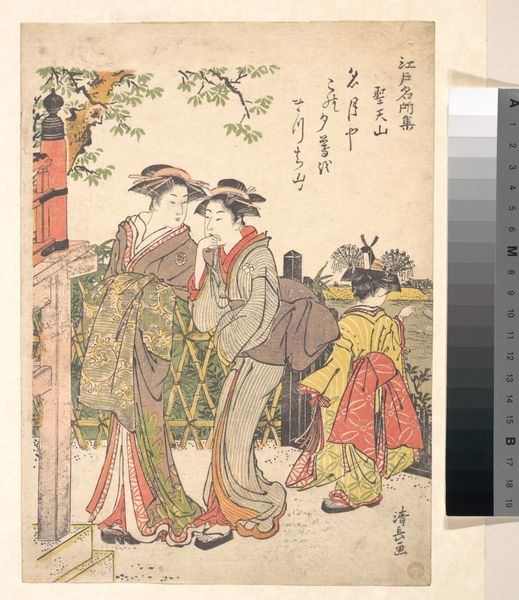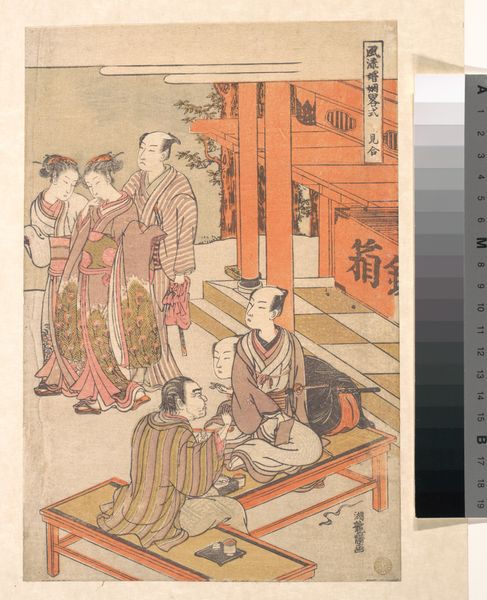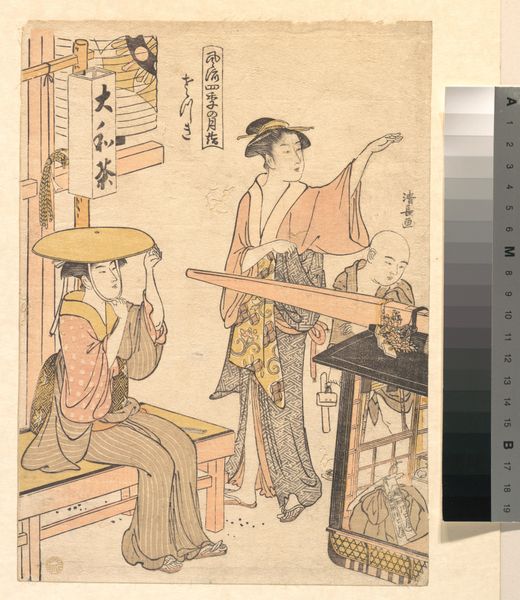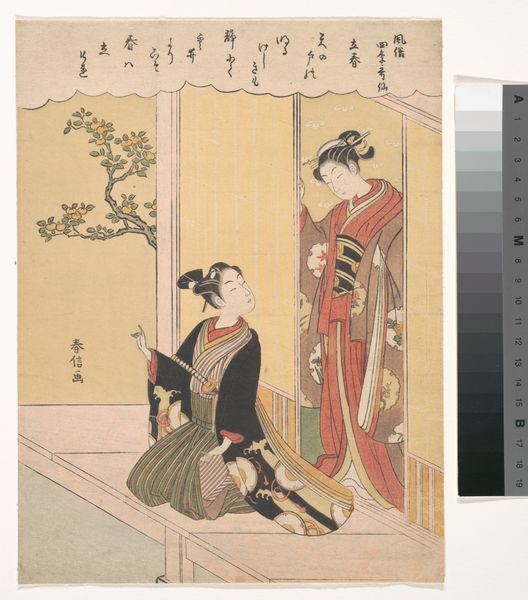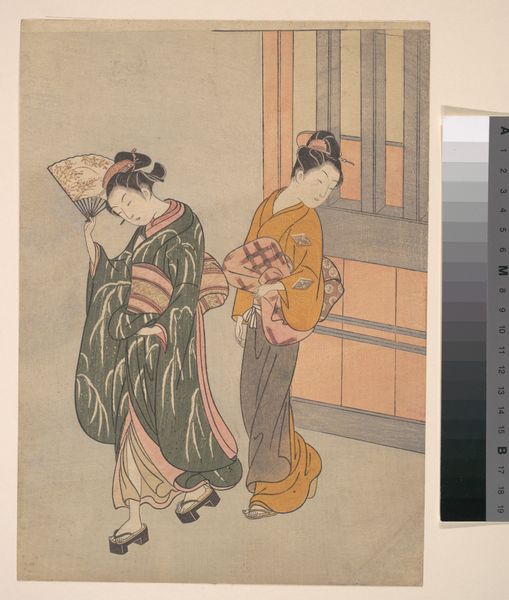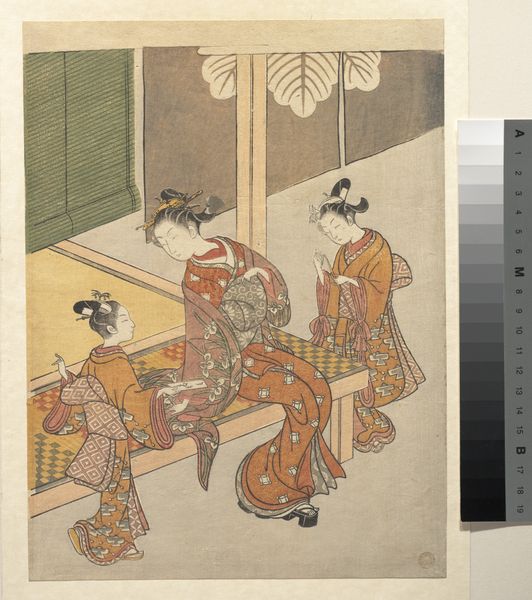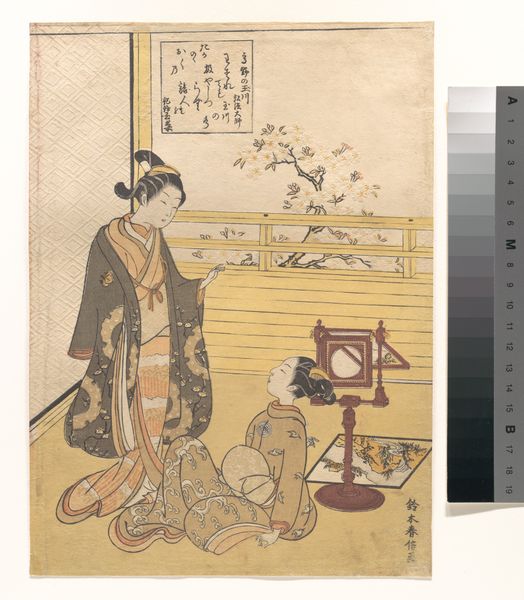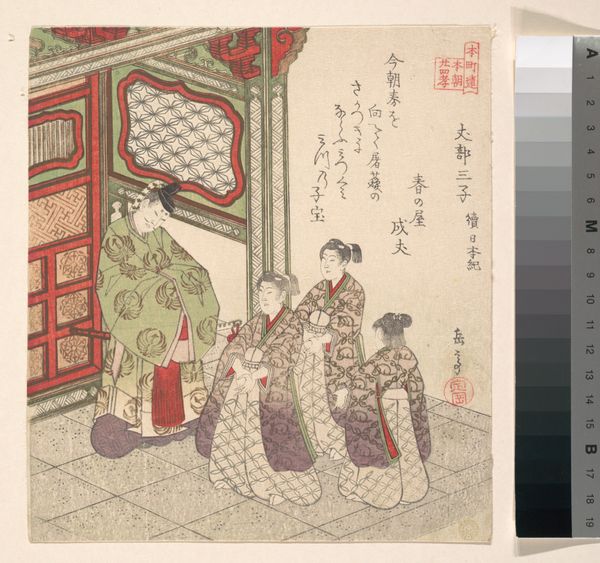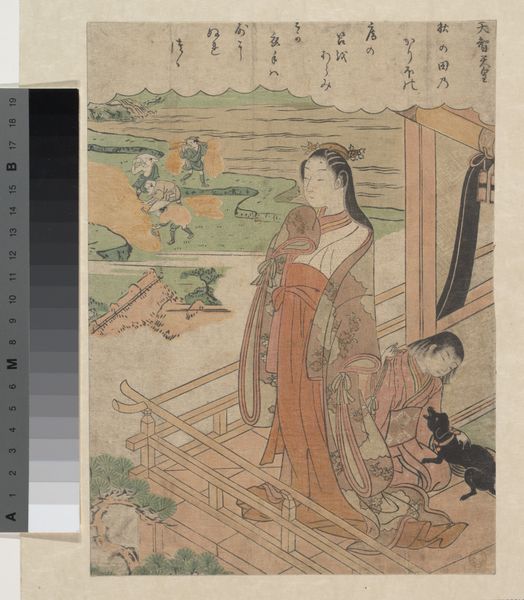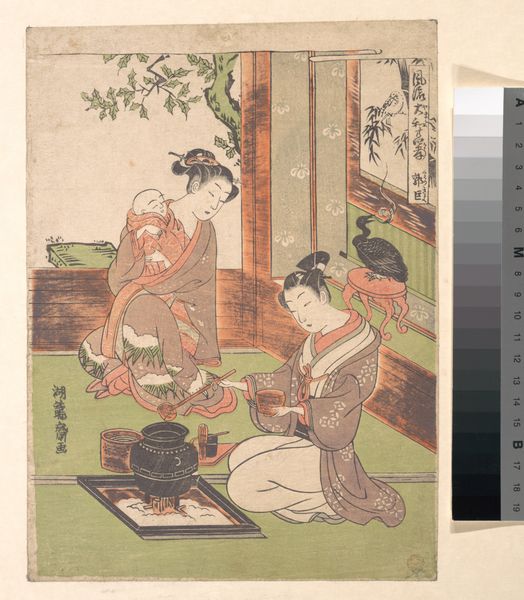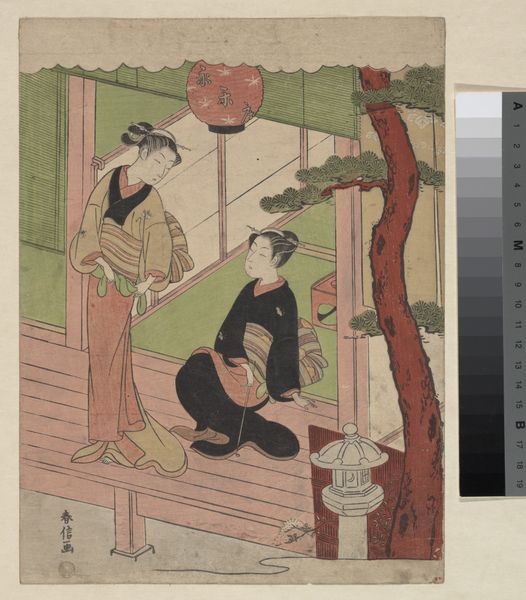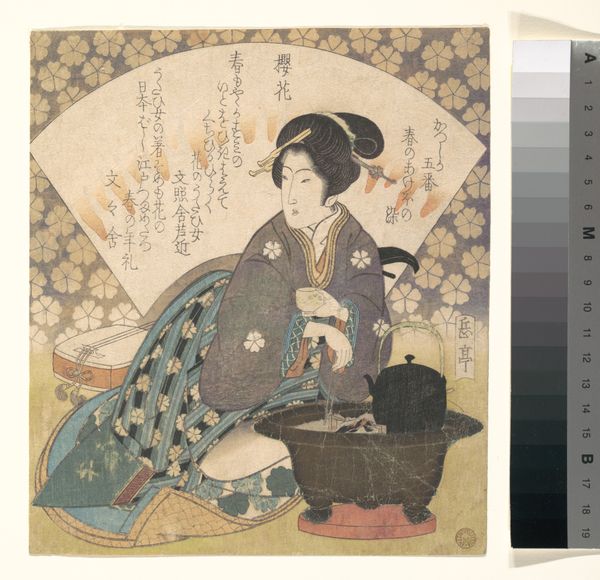
#
comic strip sketch
#
aged paper
#
comic strip
# print
#
asian-art
#
sketch book
#
traditional media
#
japan
#
personal sketchbook
#
men
#
sketchbook drawing
#
watercolour illustration
#
storyboard and sketchbook work
#
sketchbook art
Dimensions: H. 10 3/8 in. (26.4 cm); W. 7 5/8 in. (19.4 cm)
Copyright: Public Domain
Isoda Koryūsai created this woodblock print, “The Kago Returning from Go-ju-ken,” in Japan during the late 18th century. It depicts two women, likely courtesans, in conversation as a kago, a type of palanquin or covered litter, arrives. Koryūsai was a samurai turned artist who worked during the Edo period, a time of economic growth, strict social order, and the flourishing of urban culture. Woodblock prints like this one catered to the merchant class, who, despite their wealth, were socially restricted. These prints often depicted the licensed pleasure quarters, offering a glimpse into a world of beauty, fashion, and entertainment that was both alluring and forbidden. The print hints at the complex social dynamics of the time. The courtesans, though seemingly glamorous, were bound by strict rules and their status was precarious. The kago itself represents both luxury and confinement, a means of transport but also a symbol of social hierarchy. To understand this artwork fully, we can turn to historical records, literature, and social histories that shed light on the lives of women, the culture of the pleasure quarters, and the social codes of Edo period Japan. In doing so, we can appreciate how the seemingly simple scene captures a complex interplay of social forces.
Comments
No comments
Be the first to comment and join the conversation on the ultimate creative platform.
